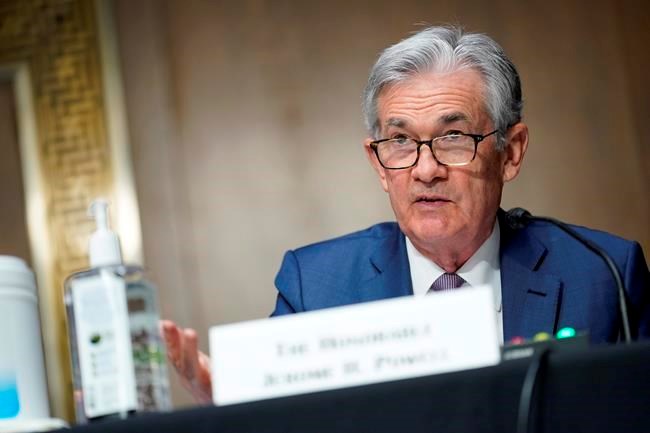WASHINGTON — The Federal Reserve is keeping its ultra-low interest rate policies in place, a sign that it wants to see more evidence of a strengthening economic recovery before it would consider easing its support.
In a statement Wednesday, the Fed expressed a brighter outlook, saying the economy has improved along with the job market. And while the policymakers noted that inflation has risen, they ascribed the increase to temporary factors.
The Fed also
The central bank left its benchmark short-term rate near zero, where it's been since the pandemic erupted nearly a year ago, to help keep loan rates down to encourage borrowing and spending. It also said in a statement after its latest policy meeting that it would keep buying $120 billion in bonds each month to try to keep longer-term borrowing rates low.
And at a news conference, Powell made explicitly clear that the Fed is in no hurry to pull back on the pace of its bond buying. The policymakers, Powell stressed, first want to see evidence of sustained and substantial improvements in the job market and the overall economy.
The U.S. economy has been posting unexpectedly strong gains in recent weeks, with barometers of hiring, spending and manufacturing all surging. Most economists say they detect the early stages of what could be a robust and sustained recovery, with coronavirus case counts declining, vaccinations rising and Americans spending their stimulus-boosted savings.
In March, employers added nearly 1 million jobs — an unheard-of figure before the pandemic. And in April, consumer confidence jumped to its highest level since the pandemic flattened the economy in March of last year.
The quickening pace of growth, on top of additional large spending packages proposed by President Joe Biden, have raised fears among some analysts that inflation, long quiescent, could rise uncomfortably fast. Raw materials and parts, from lumber to copper to semiconductors, have spiked in price as demand has outstripped the ability of suppliers and shippers to keep up.
Some companies have recently said they plan to raise prices to offset the cost of more expensive supplies. They include the consumer products giants Procter & Gamble and 3M as well as Honeywell, which makes industrial and consumer goods. Powell has said he expects supply bottlenecks to lead to temporary price increases, rather than to a prolonged bout of accelerating inflation.
Under a new framework the Fed adopted last summer, it will no longer raise rates in anticipation of high inflation, which had been its policy for decades. Powell and other Fed officials have made clear they want to see inflation actually exceed their 2% annual inflation target — and not just briefly — before they’d consider raising rates.
They’ve set that goal so that inflation would average 2% over time, to offset the fact that it has been stuck below 2% for nearly the entire past decade. Fed policymakers
One reason Powell has said he thinks the inflation pressures building in the U.S. economy will prove temporary is that, for now, most Americans don’t expect prices to rise much in the long run.
At his news conference, Powell was asked how the Fed would respond if inflation expectations were to increase before the economy had achieved something approximating full employment.
“For inflation to move up in a persistent wait that moves inflation expectations up,” the chairman said, “that would take some time, and you would think it would be quite likely we would be in very strong
Once expectations for inflation do rise, they can be self-fulfilling: Workers start demanding higher pay to offset expected price gains, and retailers begin raising prices to offset increased wages and supply costs. This can set off a wage-price spiral, something the United States last experienced in the late 1960s and 1970s.
Apart from inflation, the Fed’s new framework includes a sweeping definition of maximum employment that includes fully recovering the jobs lost to the pandemic, including among many people of
The Fed’s policymakers themselves have turned more optimistic about the recovery. Last month, they significantly upgraded their forecasts for growth and inflation. They estimated that the economy will expand 6.5% this year, up sharply from their previous projection in December of 4.2%. And they raised their forecast for inflation by the end of this year from 1.8% to 2.4%.
Christopher Rugaber, The Associated Press




